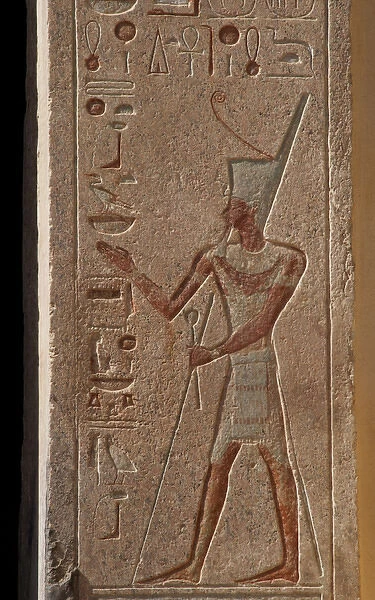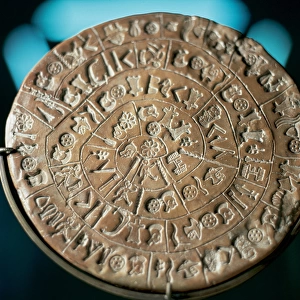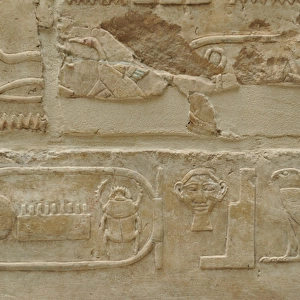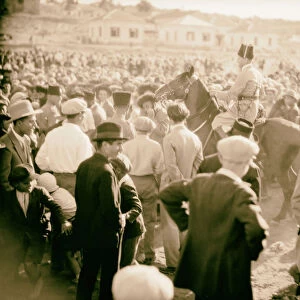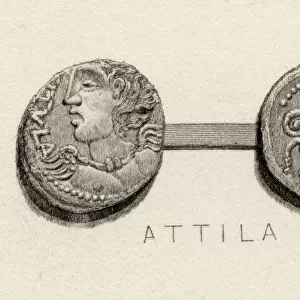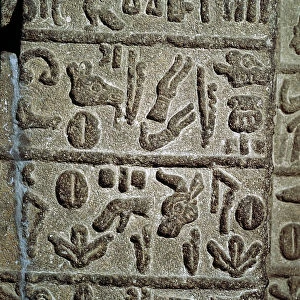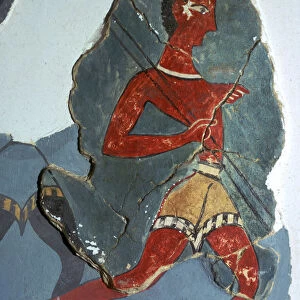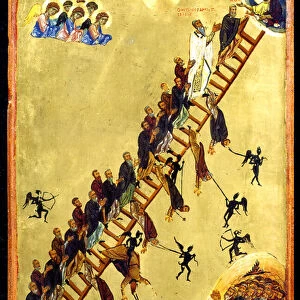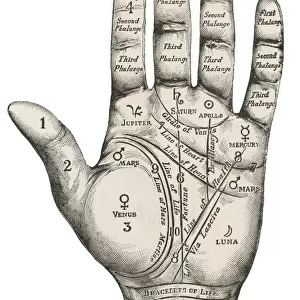Home > Historic > Ancient civilizations > Ancient Egypt > Egyptian hieroglyphics
Relief depicting Hatshepsut and hieroglyph on the walls. Tem
![]()

Wall Art and Photo Gifts from Mary Evans Picture Library
Relief depicting Hatshepsut and hieroglyph on the walls. Tem
Relief depicting Hatshepsut and hieroglyph on the walls. Temple of Hatshepsut. Egypt. 18th Dynasty. New Kingdom. Deir el-Bahari. Egypt
Mary Evans Picture Library makes available wonderful images created for people to enjoy over the centuries
Media ID 14317039
© Thaliastock / Mary Evans
Alphabet Ankh Ansata Civilitation Deir Dynasty El Bahari Hatshepsut Hieroglyphic Hieroglyphics Inscription Language Nile Perspective Pharaoh Polychrome Polychromy Reliefs Symbol Symbolism Triangle
FEATURES IN THESE COLLECTIONS
> Africa
> Egypt
> Related Images
> Arts
> Realistic drawings
> Still life artwork
> Fine art
> Historic
> Ancient civilizations
> Ancient Egypt
> Egyptian hieroglyphics
> Historic
> Ancient civilizations
> Ancient Egypt
> Pharaohs of Egypt
EDITORS COMMENTS
This stunning relief, hailing from the Temple of Hatshepsut at Deir el-Bahari in Egypt, showcases the artistic and linguistic prowess of the ancient Egyptian civilization during the 18th Dynasty of the New Kingdom. The central figure is the renowned Pharaoh Hatshepsut, depicted in polychrome and wearing the traditional nemes headdress and false beard. She is shown making an offering to the goddess Hathor, symbolized by the cow's head and the Ankh, the hieroglyph for life. The intricately carved hieroglyphs on the temple walls provide a window into the past, offering invaluable insights into the language, culture, and history of ancient Egypt. The Ankh, Ansata (scepter with a single ostrich feather), and the Triangle symbol (representing the gods) are just a few of the many symbols and hieroglyphs that adorn the temple, providing a rich tapestry of meaning and significance. The perspective of the relief, with Hatshepsut's figure framed by the temple walls and the Nile River in the background, highlights the importance of the temple as a symbol of civilization and the power of the Pharaoh as the key figure in ancient Egyptian society. The use of hieroglyphics as a written language and the intricate reliefs as a form of art were essential components of ancient Egyptian culture, allowing them to leave a lasting legacy that continues to captivate and inspire us today.
MADE IN THE USA
Safe Shipping with 30 Day Money Back Guarantee
FREE PERSONALISATION*
We are proud to offer a range of customisation features including Personalised Captions, Color Filters and Picture Zoom Tools
SECURE PAYMENTS
We happily accept a wide range of payment options so you can pay for the things you need in the way that is most convenient for you
* Options may vary by product and licensing agreement. Zoomed Pictures can be adjusted in the Cart.

